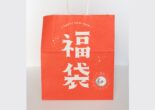Single trip paper tickets, multiple-ticket paper tickets, and commuter passes–what are they, and what’s the best deal? Read more to find out!
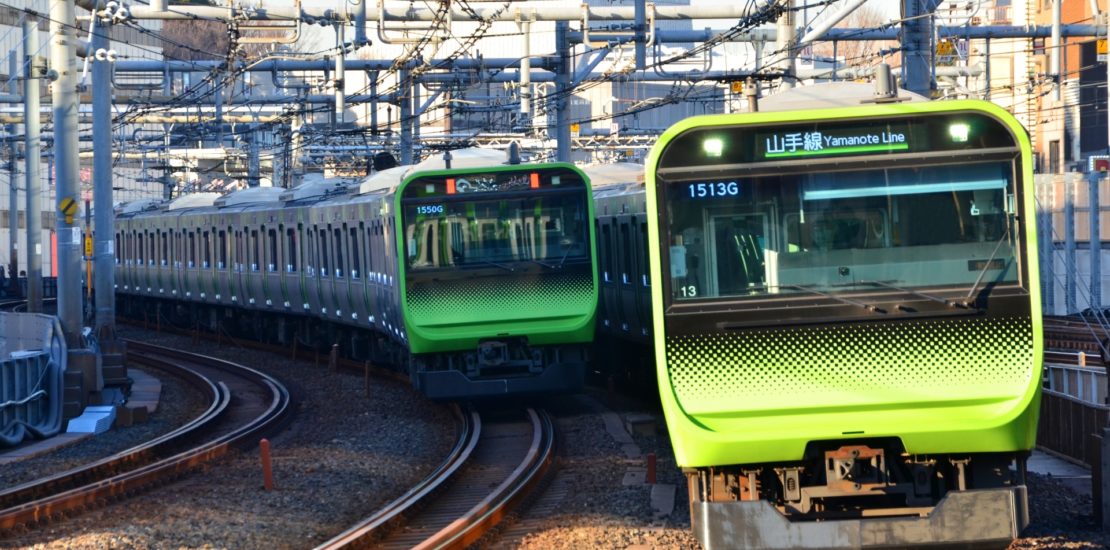
If you are doing any traveling in Japan, you will probably be using one of its numerous, highly-efficient and reliable railways. The biggest is the Japanese Railway Company, divided into JR-East, JR-West, and JR-Central. Japanese train stations are built with tickets gates or wickets, called kaisatsuguchi 改札口. This means you must have a ticket in order to reach the platform, unlike in some European countries, where you can walk from the street straight into the train car. Train tickets and passes come in all shapes and sizes, so choosing the cheapest or most convenient one may seem confusing at first. However, once you know what’s available and what to look for, it’s not so intimidating.
Types of Train Passes
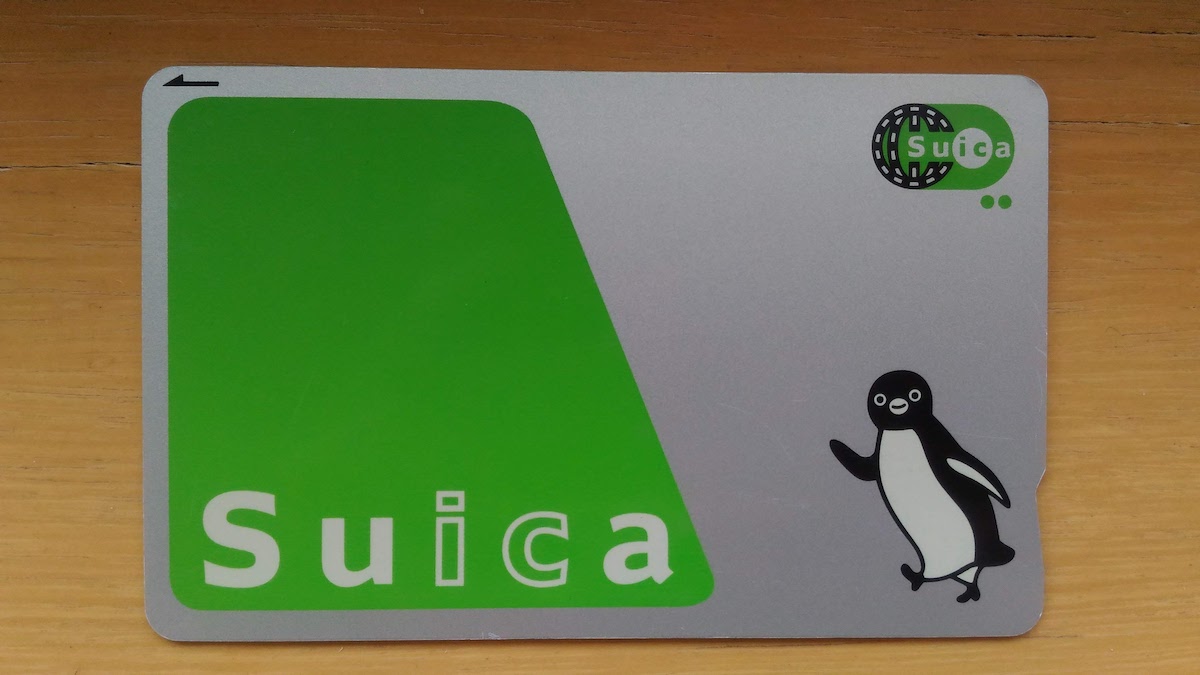
IC Cards
IC cards are by far the most convenient of the various types of train passes. About the size of a credit card, this plastic pass can be tucked into your wallet or held in a cute IC card case and attached to your bag. Keep your eye out for pass cases in the shapes of sweets, animals, popular LINE messaging app characters, and even cameras! To use, you simply tap the card against the IC card reader, and the ticket gates fly open.
It costs ¥500 to create an IC card (refundable* upon return if you are just visiting), with a ¥1,000 minimum deposit. You can top up your card inside or outside the ticket gates at the charge (チャージ) machines.
*For some cards, a handling fee may be charged, making it only a partial refund.
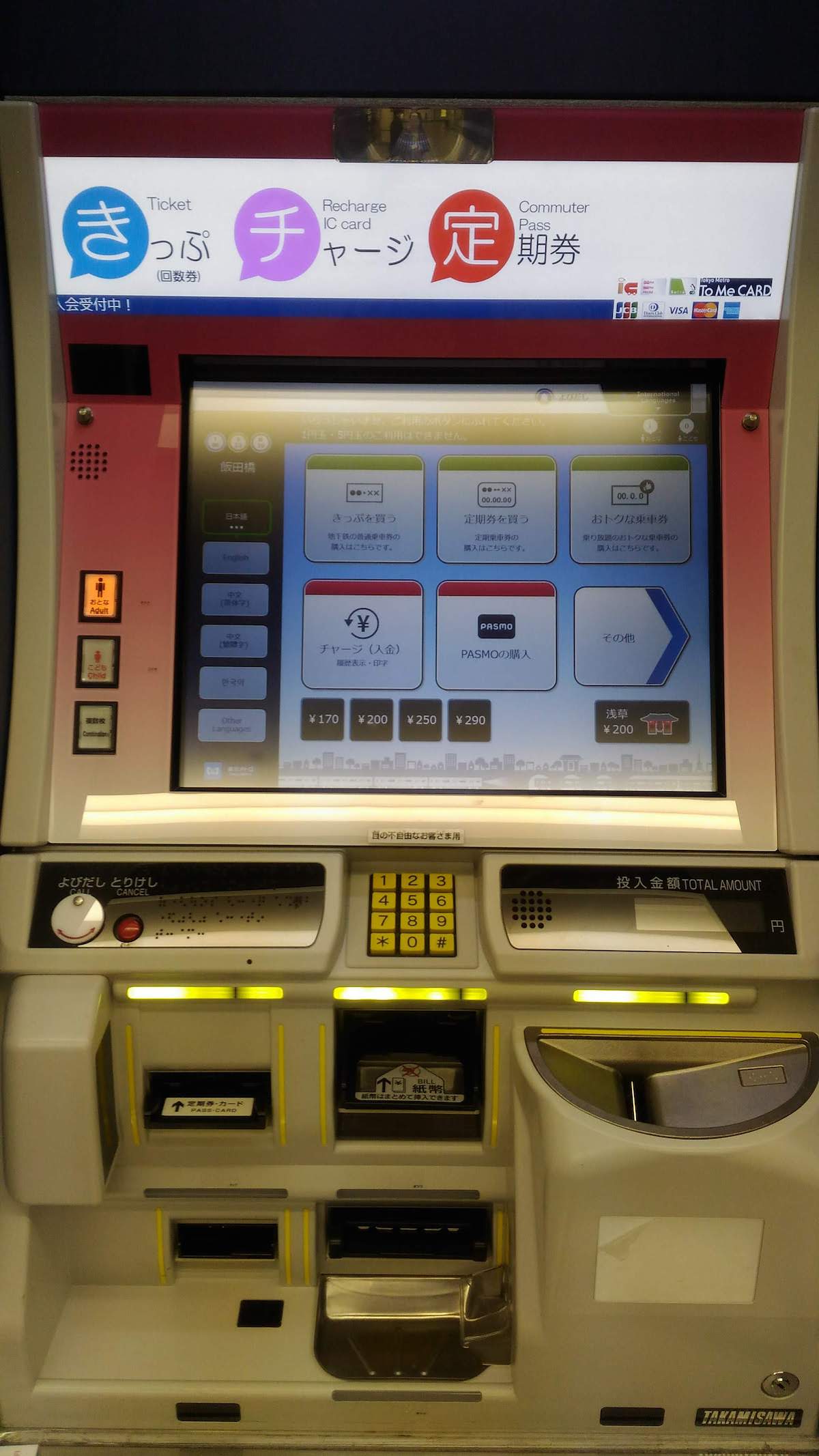
Each region of Japan has its own IC card, but they can be used interchangeably. Not only are they good for riding the train, but also buying drinks from vending machines and paying for purchases at convenient stores. Suica and PASMO are the two Tokyo area IC cards. As you commute, you will probably notice many speed-walking businessmen and women tapping their phones onto the IC card reader. If you are a pro at reading kanji and have a Japanese credit card, you can transfer your physical IC card and credit to a smartphone application and sail through those gates like a real Tokyo-ite!
Paper Tickets
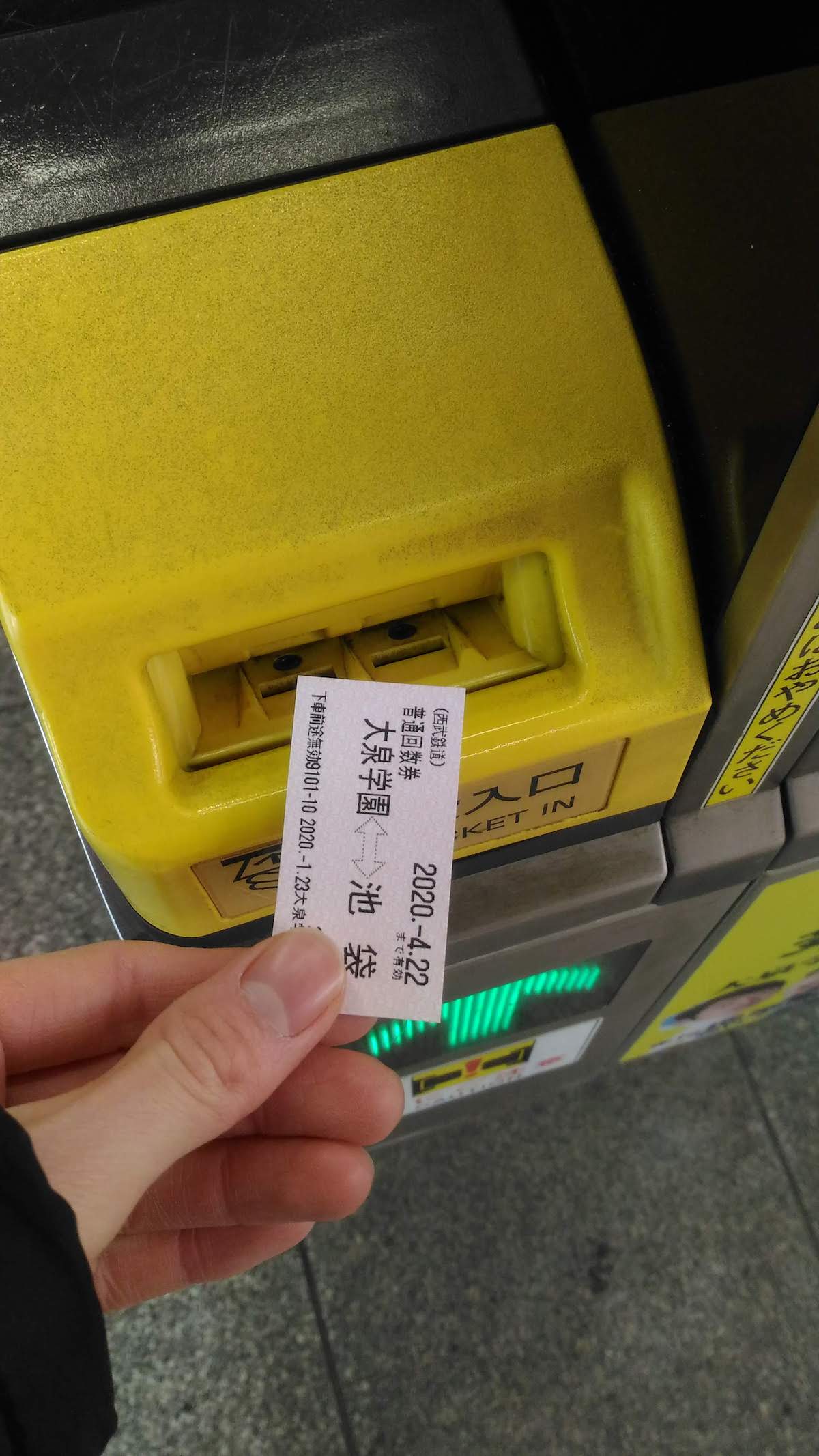
If you forget your IC card at home, you can always buy a regular paper ticket (kippu きっぷ). This is the most expensive option, but there is something very nostalgic and charming about having an actual ticket in your hand. You can buy these at the ticket machine outside the ticket gates.
When purchasing your ticket, you will choose from a range of prices, rather than station names. Find which ticket you need by consulting the train fare board, posted on the wall above the machine. The fare board shows your present location and the fare to each station along the line.
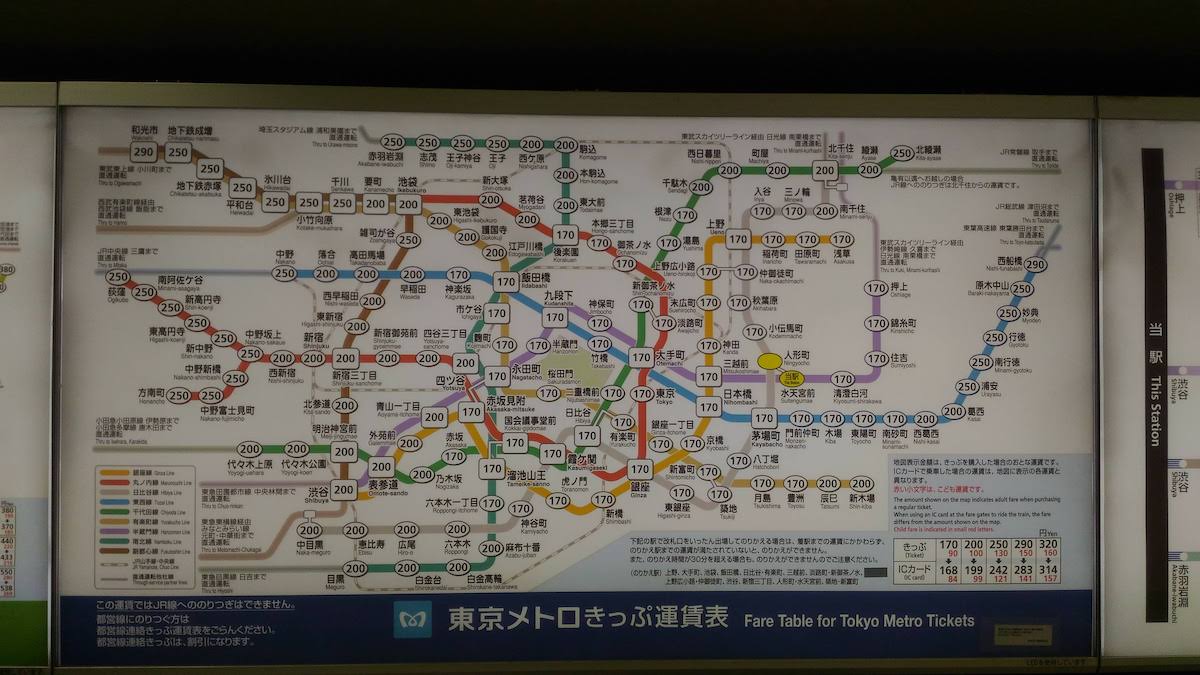
Multiple-Trip Tickets
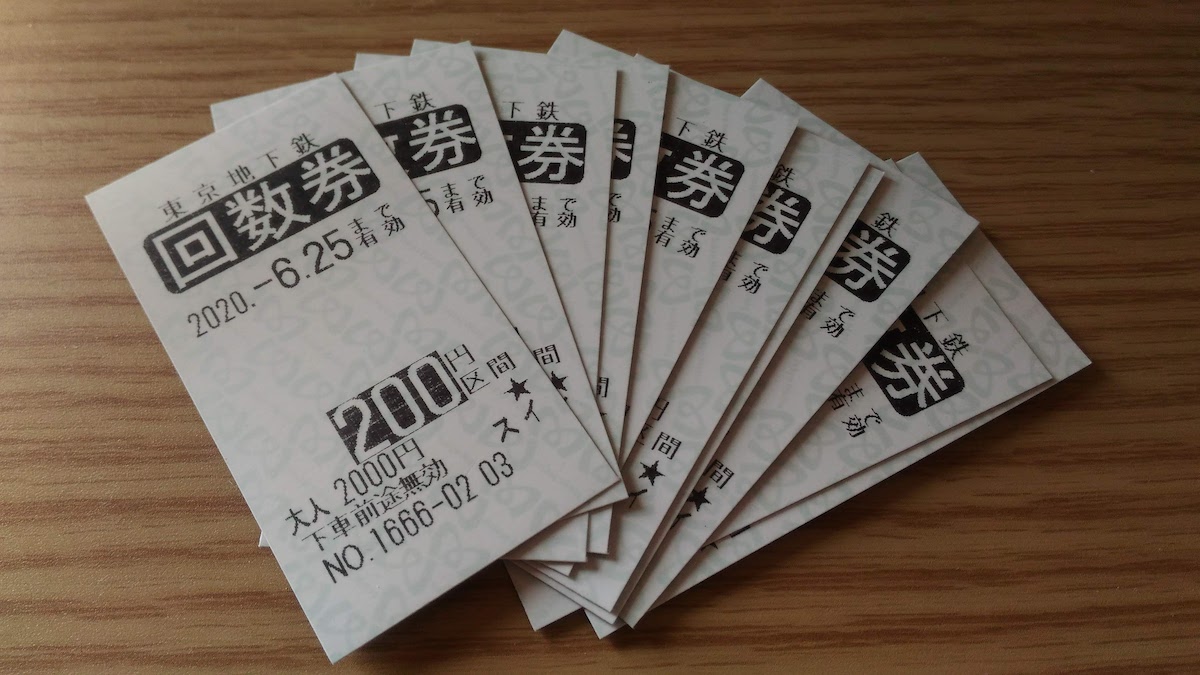
Multiple-trip paper tickets (kaisūken 回数券) come in sets of 11, 12, and 14.
- The 11-pack has no restrictions, and are basically a buy-10-get-one-free deal.
- The 12-pack “Off-Peak Ticket” can be used on A weekdays between 10 a.m. and 4 p.m. or B on weekends and holidays, as well as December 31st, January 2nd, and January 3rd.
- The 14-pack “Holiday Ticket” can only be used on the days mentioned under B.
If you are traveling mainly on weekdays, the 11-pack is the obvious choice.
Again, when purchasing, the ticket machine will let you choose from a range of train fares.
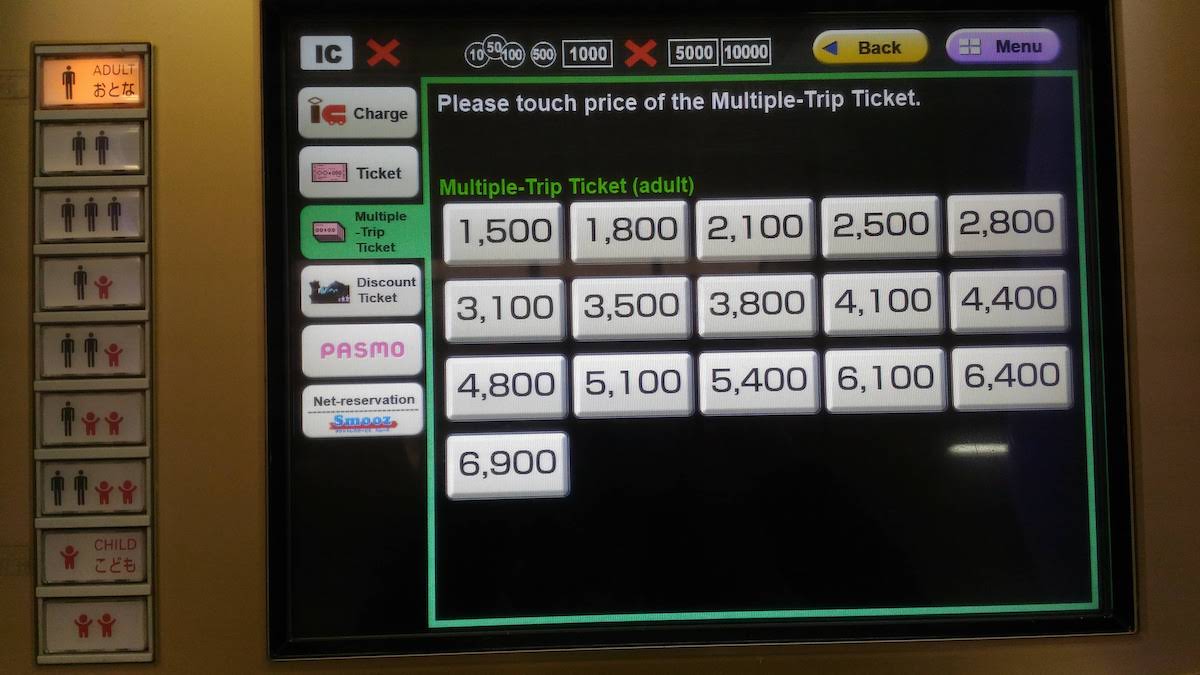
To calculate the price for your set of 11 multiple-trip tickets, simply multiply the single-trip fare by 10. After you have selected the appropriate fare, the machine will then display station names, and you can choose your final destination.
Fun fact: The free train ticket sleeves you put the multiple-trip tickets in are called fukuro (袋), or bag.
Commuter Pass
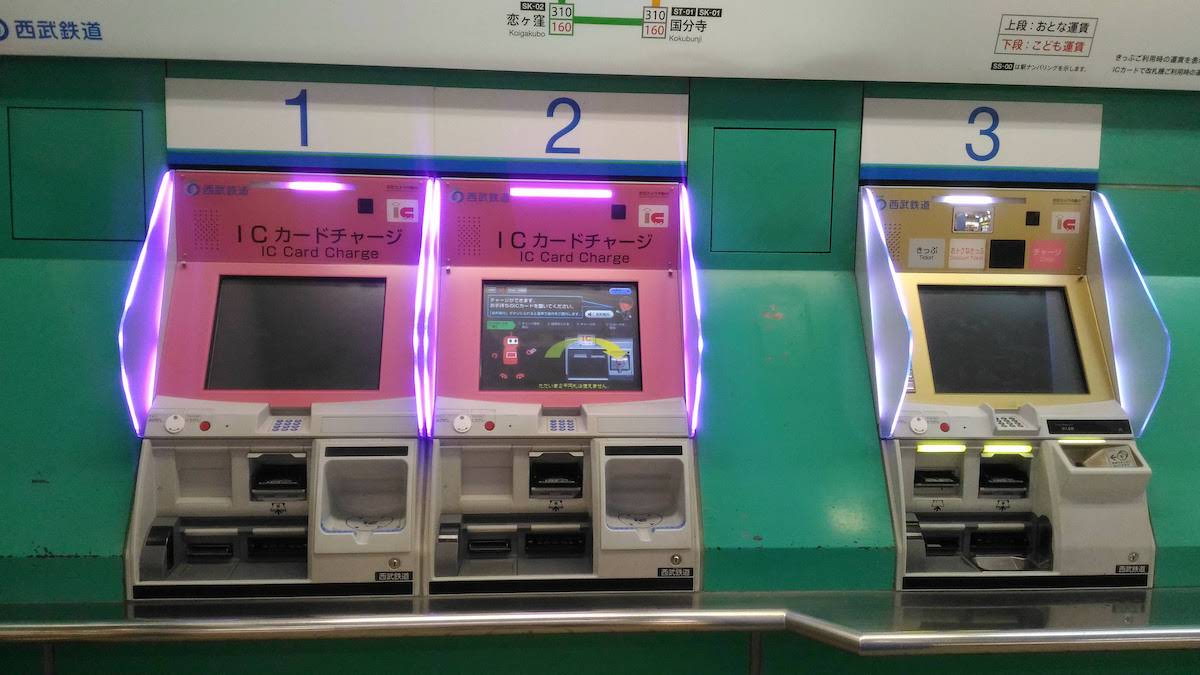
Commuter passes (teiki-ken 定期券) allow you to travel freely between your home station and final station for a set price, so they can be very handy if you take the same route to work five days a week. Of course, the more you use it, the more value for your money. You can turn your regular IC card into a commuter pass using one of the designated commuter pass machines outside the ticket gates. You have a choice of one-month, three-month, and six-month passes, which save you progressively more. The information including your start and end station, your age, and the name of the railway company will be printed directly onto your card.
Which Type of Train Pass is the Best Deal?
Now that you know what’s available, you must be wondering which train pass is the best deal. This depends on the number of times you will be using your intended route. Let’s compare prices using an example route.
Starting Station: Oizumigakuen Station (famous for the Toei Animation Studio)
Final Station: Suitengumae Station (famous for Suitengu Shrine)
For a one-time visit, which is cheaper, a regular paper ticket or an IC card?
Paper Ticket: ¥450 (one-way)
IC Card: ¥441
You save: ¥9 with an IC card.
For regular visits to your final station every weekend (for example), which is cheaper, multiple-trip tickets, or an IC card?
Multiple-Trip Tickets: ¥4,500 (includes two transfers)
IC: ¥4,851
You save: ¥351 with multiple-trip tickets.
For a regular commute between start and final station for an entire month, a commuter pass is definitely cheaper. The question is, from what point do you begin saving?
Let’s compare both with paper tickets and with IC cards.
Commuter Pass vs. Paper Ticket
Using the following formula, you can calculate the minimum number of days you should use your commuter pass to begin saving:
price of one-month commuter pass ÷ price of round-trip paper ticket = number of days
17,060 ÷ 900 = 18.9
You begin saving after 19 days.
Commuter Pass vs. IC Card
price of one-month commuter pass ÷ round-trip using IC card = number of days
17,060 ÷ 882 = 19.3
You begin saving after 19 days.
Now let’s compare the commuter pass with multiple-trip tickets. As mentioned earlier, multiple-trip tickets for weekdays come in sets of 11. For simplicity’s sake, let’s say you work 22 days out of the month.
22 days x 2 tickets (two tickets = one round-trip) = 44 tickets necessary
44 divided by 11 (one pack of multiple-trip tickets) = 4 sets of multiple-trip tickets necessary
4 sets x ¥4,500 (price of one set of 11 tickets) = ¥18,000
¥18,000 (total cost of multiple-trip tickets) – ¥17,060 (commuter pass) = ¥940
You save ¥940 with the commuter pass.
If you stop at any station between your home station and final station along the designated route, you will not be charged extra. This is great if your commute takes you through one of the major stations, such as Ikebukuro Station or Shinjuku Station–if you want to hang out there on the weekend, your train fare is paid for!
Happy Travels!
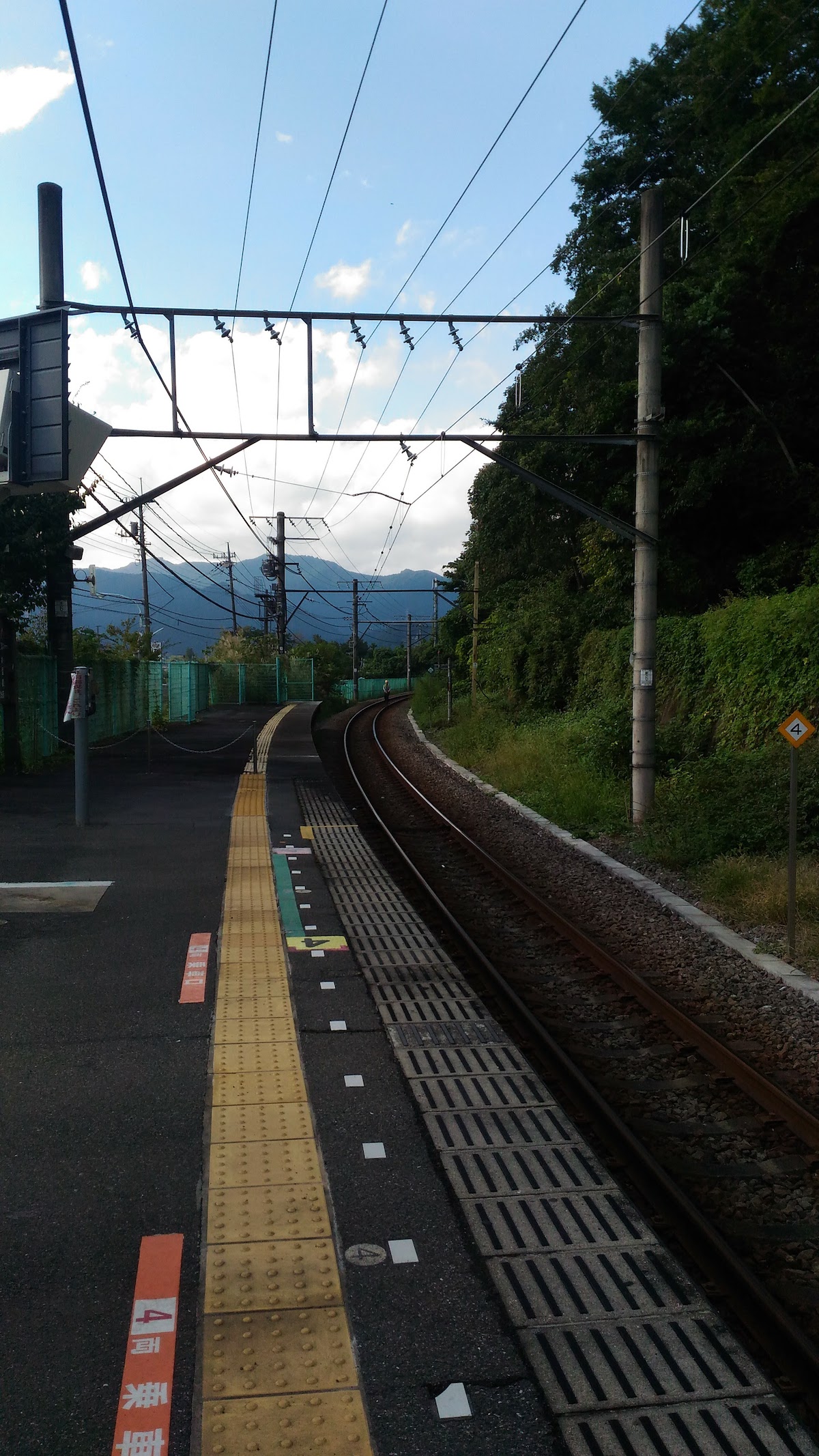
Aside from what I mentioned, there are also many special tickets, for example, the Green Car, Romance Car, bullet trains, and the Skyliner (connecting Nippori Station and Narita Airport), but those are for another article.
I hope this quick guide has given you more confidence to buy the type of pass that best suits you!
Due to the declaration of a national state of emergency, some train schedules may be altered, so be sure to double-check!
Helpful Links:
Related Articles
Warning: Undefined array key "sfsi_threadsIcon_order" in /home/veremosglobal/tokyoroomfinder.com/public_html/blog/wp-content/plugins/ultimate-social-media-icons/libs/controllers/sfsi_frontpopUp.php on line 165
Warning: Undefined array key "sfsi_blueskyIcon_order" in /home/veremosglobal/tokyoroomfinder.com/public_html/blog/wp-content/plugins/ultimate-social-media-icons/libs/controllers/sfsi_frontpopUp.php on line 170
Warning: Undefined array key "sfsi_bluesky_display" in /home/veremosglobal/tokyoroomfinder.com/public_html/blog/wp-content/plugins/ultimate-social-media-icons/libs/controllers/sfsi_frontpopUp.php on line 266

